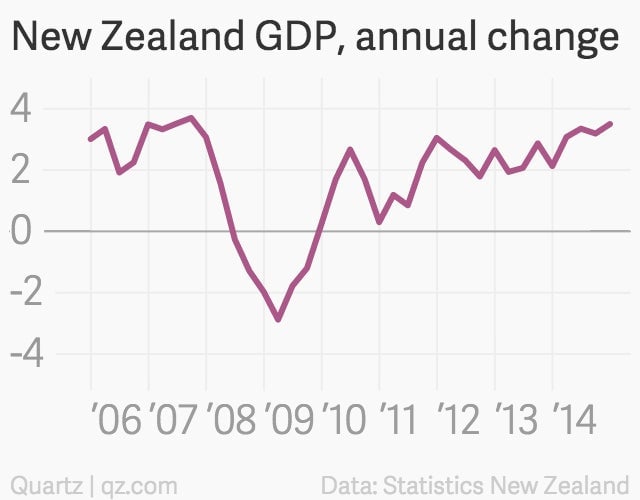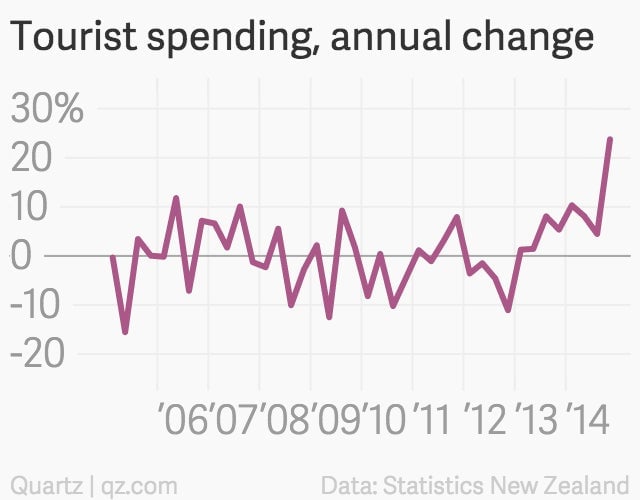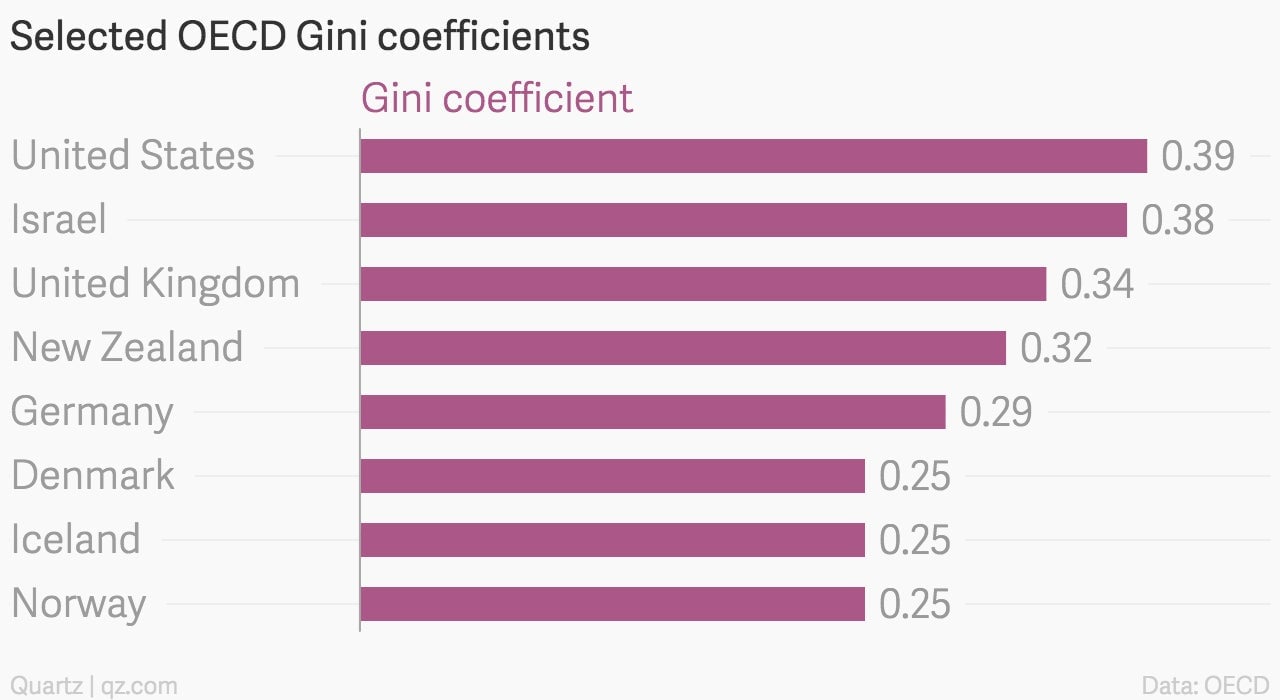The miracle economy of the southern hemisphere is not Australia
Of the two Antipodean nations co-hosting cricket’s World Cup, there’s no contesting which has the better economy.


Of the two Antipodean nations co-hosting cricket’s World Cup, there’s no contesting which has the better economy.

Just released GDP data shows output in New Zealand expanded a better-than-expected 3.5% in 2014. It’s neighbor—and bitter sporting rival—grew 2.5%.
It will give the Kiwis no small satisfaction that much of the growth was driven by the growing global realization of what an exceedingly pleasant place New Zealand is.

A surge of tourist spending helped drive the economy, it was up roughly 24% in the fourth quarter of last year. The surge in tourism has helped balance out a decline of exports. Crucial meat and dairy exports were weighed down by a drought this year.
Moreover, New Zealand’s economy stakes out a nice middle ground when it comes sharing the benefits of the economy. Using Gini coefficients—a rough gauge of inequality—New Zealand is a much more equal society than countries like the US and UK, though it’s nowhere near the egalitarian Scandinavian societies.

There’s a statistical possibility that the Kiwis and Aussies will square off in the World Cup on March 29. But the men in black already have some serious bragging rights.